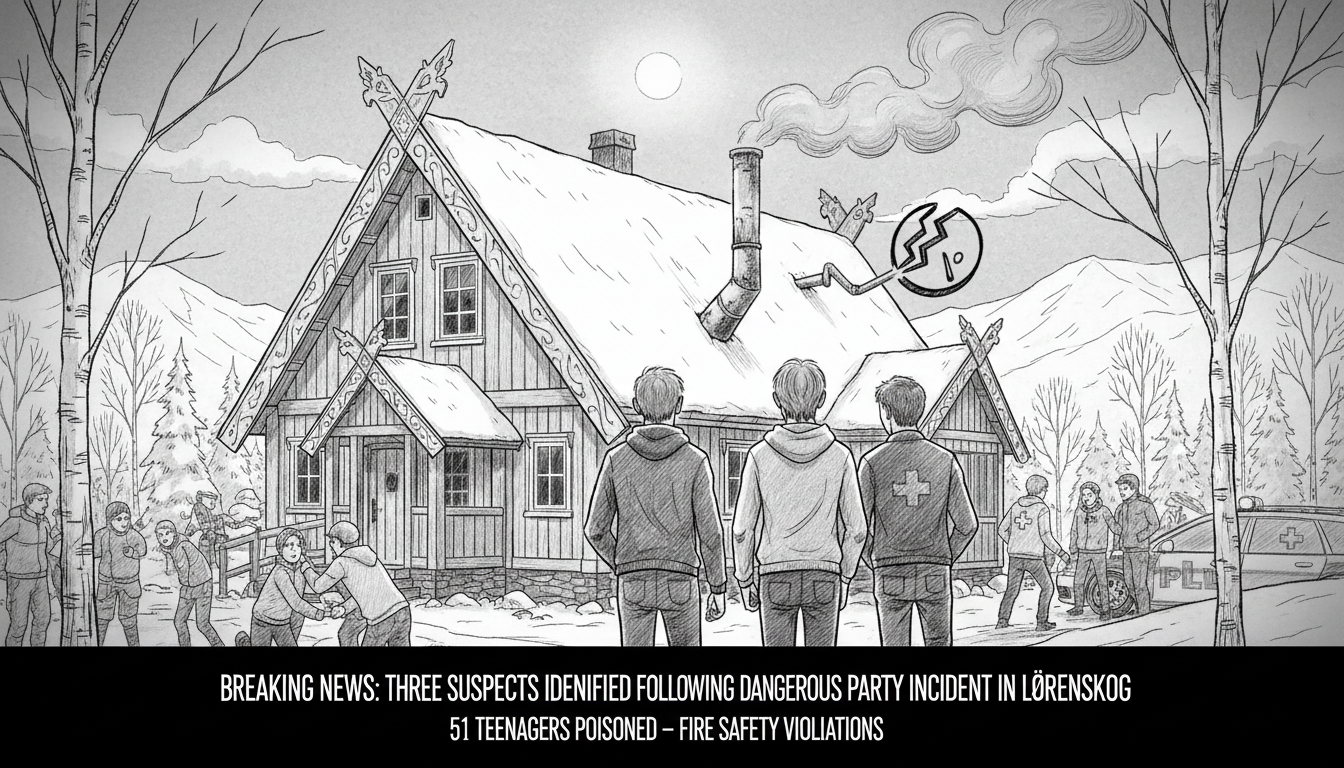Police have launched a formal investigation into a dangerous party incident in Lørenskog where 51 teenagers required medical attention for suspected carbon monoxide poisoning. Three individuals now hold formal suspect status for violations of Norway's fire and explosion protection laws.
Police prosecutor Sofie Wirum Sæter confirmed the investigation in a statement. She said the property owner, event organizer, and person responsible for the generator have all been designated as suspects under Norwegian liability regulations. The prosecutor declined to identify the party organizer specifically.
Emergency services responded to the scene on Saturday afternoon. Authorities canceled another scheduled party for Saturday evening as their investigation continued. No one has been formally charged or arrested at this stage.
Medical facilities reported treating numerous young people following the incident. Akershus University Hospital confirmed 35 admissions related to the party, though all patients have since been discharged. An additional 16 teenagers visited Oslo's emergency clinic but didn't require hospitalization.
Lørenskog Mayor Amine Mabel Andresen urged parents to monitor their children for symptoms. She noted some parents had initially mistaken carbon monoxide symptoms for ordinary fatigue after partying. The mayor expressed gratitude that her warning had reached concerned families.
The generator operator present at the event described a concerning sequence of events. He explained the generator operated in a separate room, but someone apparently opened the door to that space during a disturbance elsewhere in the building. When he returned, he found the generator room door open and windows in the main area closed, creating dangerous conditions. He immediately shut down the equipment.
Norwegian police estimate up to 400 young people attended the celebration. Investigators will continue their work throughout the coming week. They've asked any party attendees with relevant information to come forward.
This incident highlights ongoing safety concerns around Norwegian russefeiring celebrations, where high school graduates mark their completion of secondary education. While these traditions hold cultural significance, authorities repeatedly stress the importance of safety planning for large youth gatherings. The rapid medical response and coordinated investigation demonstrate Norway's systematic approach to public safety incidents.
Local officials now face questions about oversight of large private events. The case also raises broader discussions about youth safety during traditional celebration periods. Similar carbon monoxide incidents have occurred at indoor events across Scandinavia, particularly during colder months when ventilation becomes compromised.

